By Stephen Saunders
Albanese’s population and environment policies riff on UN policy. His Made in Australia launch seems to propose a similar template for industry.
For an arid continent in the far south seas, it’s a staggering policy distortion. There were probably one million migrants, net, in two years of government. This is about 350,000 higher than the previous record—also Labor. It is about 850,000 higher than the kind of level that might eventually stabilise our population at around 30 million or so.
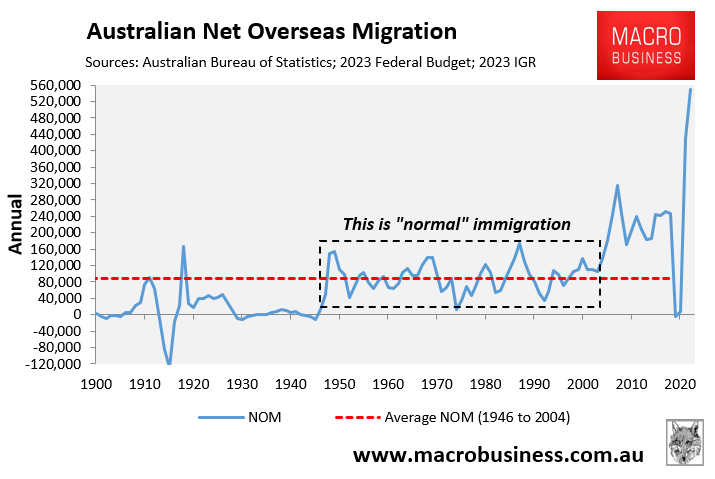
UN-style population policy
In opposition, Albanese promised “climate action” and jobs for Australians first. In government he’s delivered UN open borders.

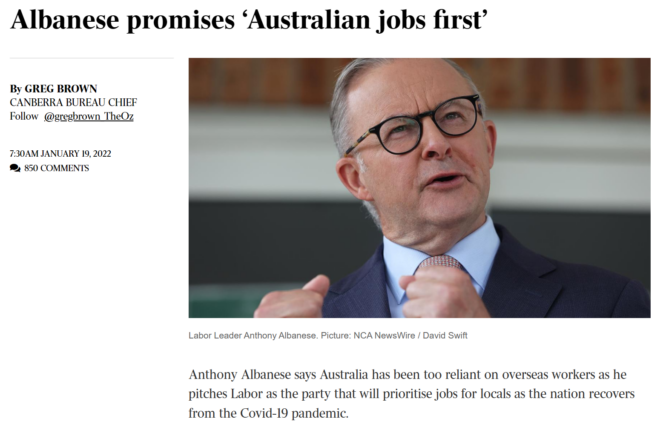
Instead of dissing the public service like Scott Morrison, he lavished extra resources to process more visas faster than ever.
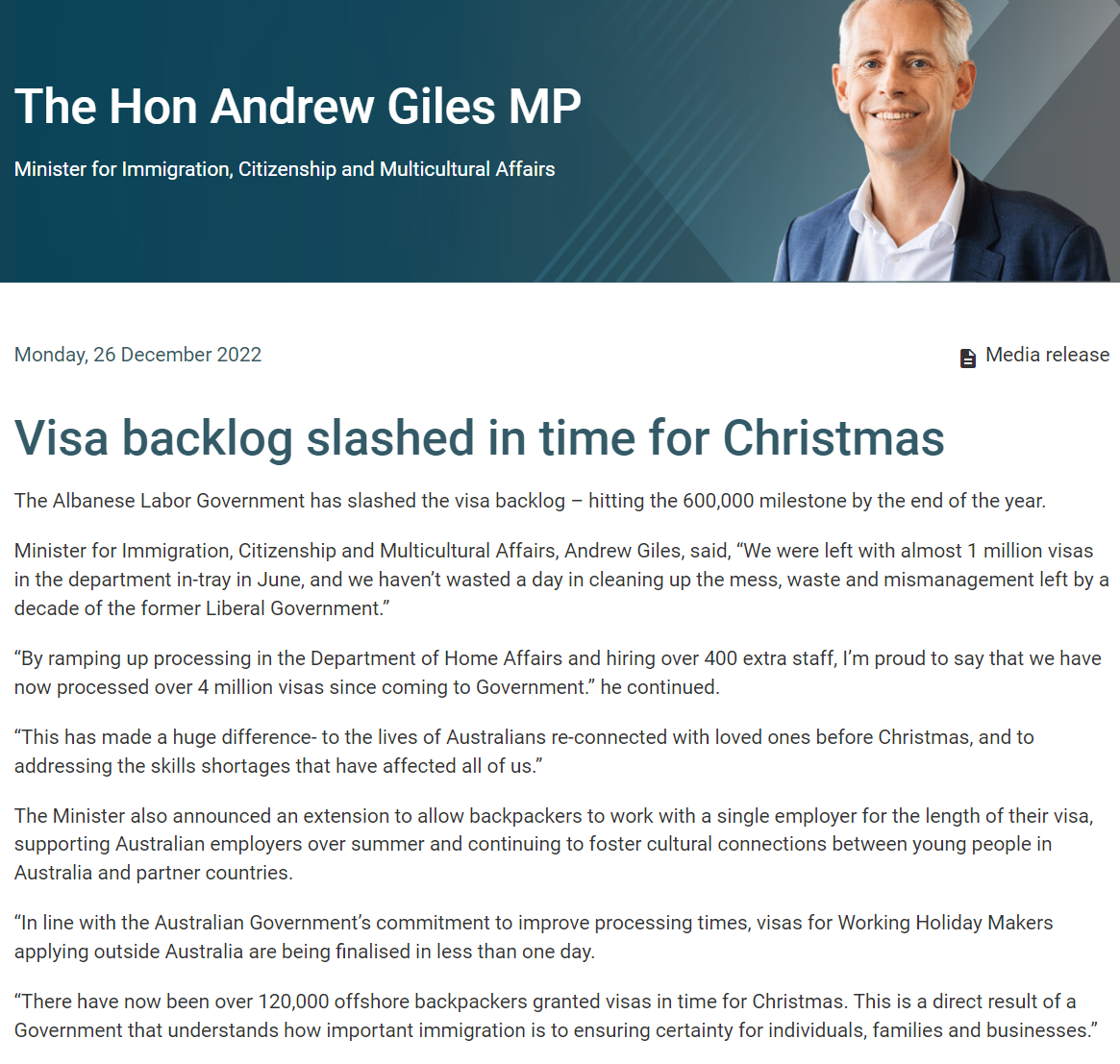
Importantly, his unheard-of immigration has required unprecedented fibbing. It’s not population replacement, heck no, we’re “halving migration”.
To group applause from uniformly selfish “stakeholders”, UN Albanese has achieved all this. Bravisimo, as they might say in Argentina. Do local paisanos buy it? Not yet.
No reliable post-COVID survey aligns voters with Huge Australia, which diminishes their living standards, crushes housing affordability, and creates tent cities.
The sixth voter survey from Australian Population Research Institute (TAPRI) confirms the resentment. Despite the “progressive” climate agenda, nearly 50% of respondents wanted much lower or nil net-migration, well up from the previous survey.
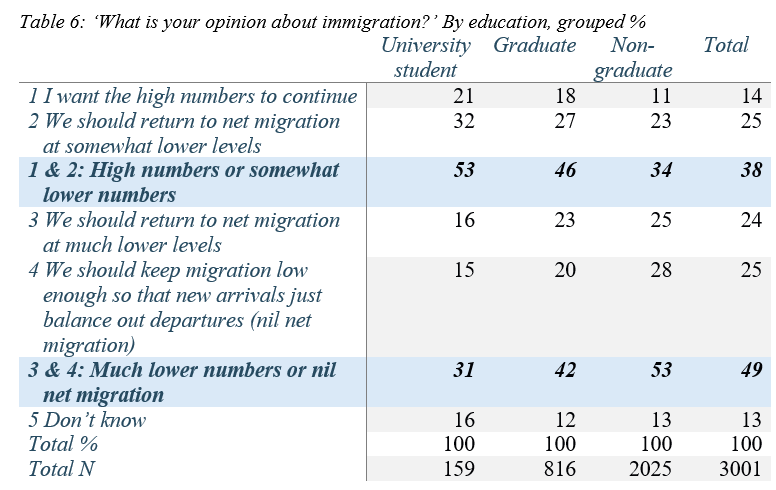
About 70% thought Australia didn’t need more people. Our neoliberal Treasury, however, is implacable. It’s not enough to mushroom from 19 million people to 27 million just this century. Only 40 million plus will do.

How do government and stakeholders deal with voter resistance? Cruelly. Can’t find affordable accommodation? Not our problem, losers. Eat this Budget surplus instead.
UN-slanted environment policy
It’s common sense that Australia’s environmental decline proceeds on various physical fronts. Largely due to endless growth and state-sponsored over-development, too many humans are converting too much of a finite and fragile continent. 1788 environmental attitudes persist.
How does the 21st century Aussie economy handle this struggle? Never mind habitat and water, just shrink the environmental concerns down to greenhouse-gas emissions.
Through dodgy carbon-accounting, UN “net-zero emissions 2050” sidelines the global overpopulation issue. Notionally, Australia signed the UN protocol in 2016, but Albanese escalated the commitment in 2022.
Never mind net-zero’s dubious validity and practicality. Although few scientists compromise their careers by saying so openly.
Albanese Labor also dismisses overpopulation and the damaged environment because we’re helping UN address the “climate emergency”. Let’s give Ken Henry’s endangered marsupials the good news.
The EU threatened Morrison with carbon “border taxes” on Australian imports. Superficially, Albanese is a game-changer.
Albo is lionised as a climate hero by Canada, the other rich democracy doing massive migration plus aggravated rental crisis plus a fake housing plan. Albo scored a prized guernsey from the German climate club.
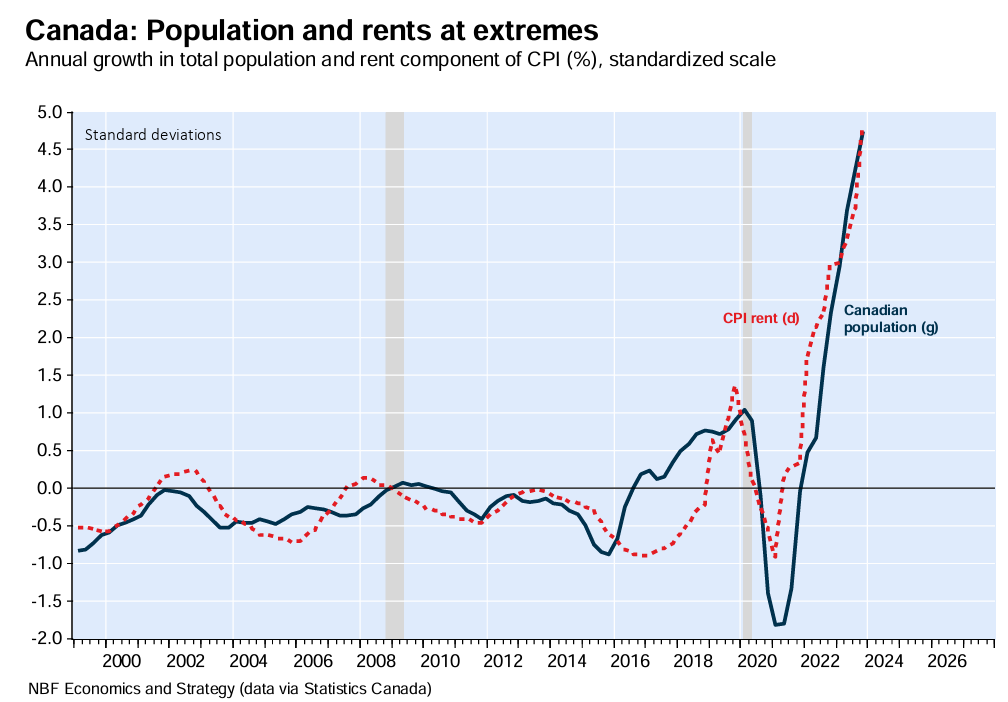
Back home, he’s a whirlwind. Net-zero legislation for net-zero target with net-zero authority plus net-zero public service and net-zero economy.
Climate stakeholders vie for virtue. The Climate Authority suggests an “ambitious” 65-75% emissions reduction by 2035. What about net-zero 2035, says the Climate Council and ANU.
CSIRO marches “Towards Net Zero”, betting on “carbon sequestration”. For the Superpower Institute, never mind Australian net-zero, we can also absorb an “extra 7%” of global emissions. You cannot make this stuff up?
In the Climate & Environment Department (DCCEEW), Ministers Bowen and McAllister’s climate and energy divisions are the bee’s knees. Environment divisions under Minister Plibersek are so 20th century.
Two years of environmental reform promises went onto life-support when WA mining interests got toey. Will Labor ever get over the miners’ defenestration of Kevin Rudd?
But surely UN loves us by now? Didn’t they come across that way when the self-important UNFCCC chief visited?
If we didn’t meet our “climate targets”, he lectured, we’d need to be “front and centre” in resettling entire populations of climate refugees.
UN-themed industry policy
It’s often said Australia shouldn’t “pick winners”, industry policy should no longer be favoured.
Yet, nearly all advanced nations pick distinctive industry priorities. Sardonically, ours read like intensive agriculture, natural-resources giveaways, extreme population growth, “export” education, and real-estate speculation.
The first industry, they say, feeds more than 60 million people (in total). Given our poor soils and climatic extremes, let’s protect this small global virtue. Don’t risk it through Big (now Huge) Australia.
The second, especially iron-ore and fossil-fuels, keeps us afloat. As a commodities price-taker, our federal budget can stand or fall on red-dirt fluctuations. Unlike sensible nations, we sequester far too little of the come-by-chance spoils.
Instead of enforcing vigorous wealth-funds, robust levies, strict taxes, Australia kowtows to extractive multinationals. Juukan Gorge explosion symbolises the contempt we receive in return.
Isn’t the only way up? Don’t bet on it.
Last year, Treasurer Chalmers’ Budget trumpeted “renewable-energy superpower” and “net-zero industries”. Now this is morphing into industry policy.
Albanese’s Made in Australia launch declares this isn’t “about ideology”. The hell it’s not.
Australian manufacturing has further collapsed this century. Energetic R&D, buzzing venture-capital culture, aren’t local style.
Manufacturing inputs like land, transport, energy, communications, labour, are costly. In the name of “export education”, training locals for vital professions and trades is at a discount.
Twenty years of Big Australia has wrecked productivity and capital formation.
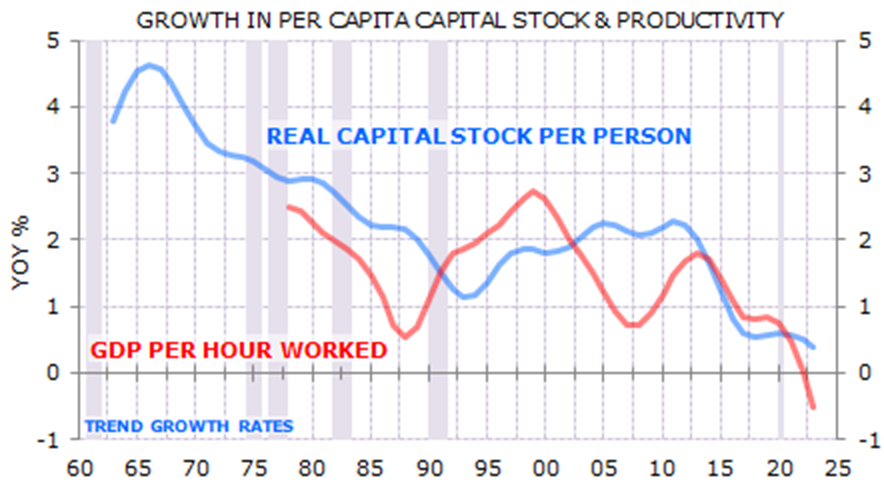
Albanese perpetuates the east-coast gas cartel, the source of ruinous energy prices. With gas not a UN-approved fuel, our gas-bonanza is weaponised to punish local consumers and manufacturers.
Leapfrogging these structural impediments, the launch plucks out modish “winners”. “Green” hydrogen, “green” or critical minerals, and “advanced” (read solar) manufacturing.
These follow from the local cargo-cult whereby our bountiful sun, wind, and terrain, will make us a global energy superpower and carbon super-sink.
Even if this were true, how much (manufacturing) advantage would it confer when we have third-world population growth plus spendthrift natural-resources management? When we have systematically undermined the preconditions for industrial prosperity?
Ironically, even the Superpower Institute disliked Made in Australia. In their fantastic “net-zero world”, Albanese should only subsidise true areas of “comparative advantage”. Guess what: “green iron”.
Twiggy Forrest and Mike Cannon-Brookes duked it out over their futuristic energy-cable to Singapore. If green billionaire energy projects have such exciting commercial prospects, do they really need subsidies?
Ah well, Made in Australia also includes quantum computing. Like AI, this too requires humongous energy inputs, “abated” close to net-zero no doubt. But let’s see if it pans out commercially.
Electoral implications
Masquerading as an identity-conscious climate-wise socialist, the authoritarian fixer Albanese is driving too many Australians into substandard accommodation and homelessness.
His “UN Australia” model ought to galvanise a free-enterprise Liberal Opposition.
However, while rebuking Labor lies, the Liberals are careful never to commit to low migration. They tiptoe round net-zero, yet lose their electoral minds over nuclear power.
In the US and EU, notes TAPRI, strong parties or coalitions channel voter dismay at “progressive” globalisation and mass migration. TAPRI points to Denmark, long on competitiveness and redistribution, short on immigration.
In Australia, Labor, Liberal, Greens, Teals seem to be waiting for the changing electoral demographic to swing round to the elite (woke) consensus. Too much immigration is never enough.
Ominously for local opportunity and equality, the imminent Budget and ensuing election will lock in 250,000-300,000 net-migration annually as the “normal” or “desirable” minimum. Three-four times too high.
According to the Treasurer’s latest pitch, the top criteria for Made in Australia Budget largesse will be industries “where we can be competitive” that contribute to an “orderly path to net-zero”.
This is UN motherhood and won’t offset our regressive population, environmental, and industrial settings.

